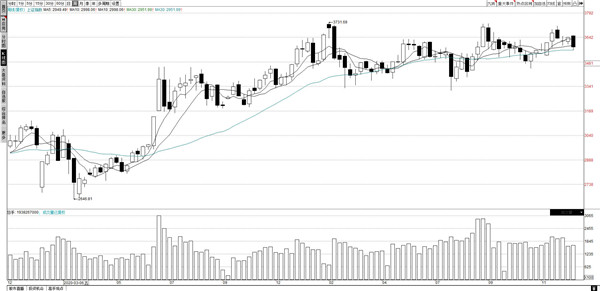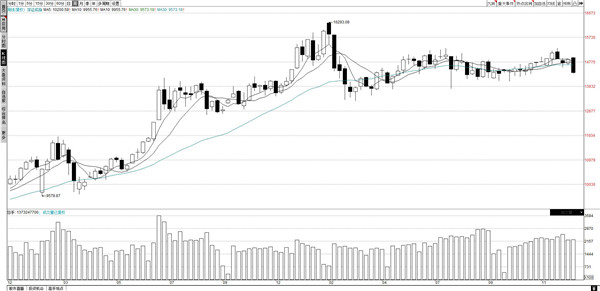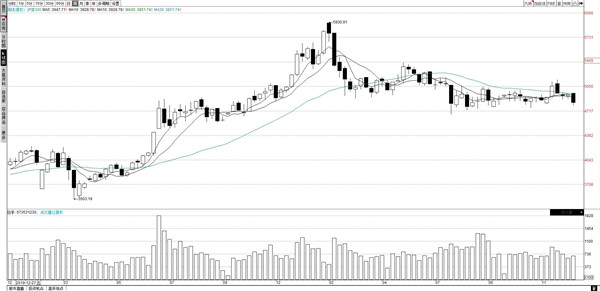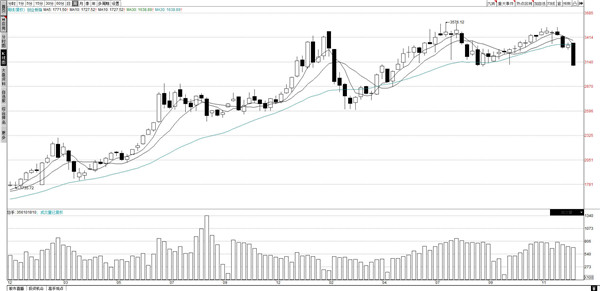Financial Lianliankan | Stock Market Weekly Review: The first week of the new year Stock market signals: water flows to the bottomFly into the homes of ordinary people
In the first week of 2022, the Shanghai and Shenzhen stock markets continued to adjust unexpectedly. Among them, the ChiNext Index had the largest decline, and the Shanghai Composite Index was relatively defensive. Although the start has failed, there are many important signals from the sector and industry this week, such as high price-earnings ratio, high price-to-book ratio, high stock price decline, low price-earnings ratio, low price-to-book ratio, and low-priced stocks; stocks are rising sharply in 2021. , Stocks that fell in 2021 rose. This phenomenon shows the law of water flowing to lower places and is worthy of attention.
The indexes fell across the board this week
On January 4, the major indexes of the Shanghai and Shenzhen stock markets fell all the way after opening higher, and eventually all closed down. Among them, the GEM index fell by 2.18% on the first trading day of the new year, and everyone’s expectation for a good start came to nothing. In the following days, the broader market continued to fall, and the indexes fell for 4 consecutive days this week.
The Shanghai Composite Index closed at 3,549.54 points on Friday, down 1.66% in the first week of the new year. The Shenzhen Component Index closed at 14,343.65 points on Friday, a decrease of 3.46% this week; the ChiNext Index closed at 3,096.88 points on Friday, a decrease of 6.8% this week, the largest weekly decline since March 2021, and it fell to half a year. The previous position.

Caption: Weekly K-line chart of Shanghai Composite Index

Caption: Shenzhen Component Index Weekly K-line Chart
This week, the major indexes of the Shanghai and Shenzhen stock markets fell across the board, but the differences were large. The Shanghai Composite Index was relatively defensive, while the ChiNext Index fell sharply. This difference is in fact reasonable. Since 2019, the major Shanghai and Shenzhen indexes have risen for 3 consecutive years. The cumulative increase for 3 years, the ChiNext index has the largest increase, and the Shanghai Composite Index has the smallest increase. Therefore, when it falls, the ChiNext has the largest decline, and the Shanghai Composite Index has the smallest decline. .

Caption: Weekly K-line chart of Shanghai and Shenzhen 300 Index

Caption: Weekly K-line chart of the ChiNext Index
This differentiation is of course related to the heavyweights of the index. The ChiNext index has risen tremendously in the past few years, and it is related to the Ningde Times and several biomedical stocks. Among them, the Ningde Times, as a representative of the new energy sector, will rise as high as 231 in 2020 and 2021. %, 67.58%, becoming the fourth largest A-share stock with a market value of 1.3 trillion yuan. However, in the first week of the new year, CATL fell by as much as 8%. At the same time, Mindray Medical, which has a larger weight in the ChiNext Index, fell by 14 this week. %, Aier Ophthalmology, Zhifei Biological, Kanglong Chemical and other companies have also fallen, leading to the largest decline in the ChiNext Index.
The Shanghai Composite Index is relatively resilient, mainly due to the better performance of blue chip stocks. First, the banking sector rose across the board. The four major banks rose by 1% to 4% this week. Insurance stocks also rose across the board. PetroChina rose by 7%, but the consumer sector continued to perform. In the downturn, Kweichow Moutai fell 5% this week. The hedging of these sectors resulted in a smaller decline in the Shanghai Composite Index.
Ninety percent of bull stocks fell last year, and 60 percent of bear stocks rose last year
In terms of individual stocks, the proportion of stocks that fell this week was 58%, and more than 40% of stocks still rose. Most of the stocks that have fallen are stocks that have risen sharply last year, and most of the rising stocks are stocks that have fallen last year.
At the end of last year, the author pointed out that the risk of the second year of the stock rise in 2021 should be prevented. This risk will be realized immediately in the first week of the new year. More than 300 bull stocks that rose by more than 100% in 2021 have fallen by nearly 90% in the first week of the new year. Of the 13 stocks that fell more than 20% this week, 70% rose more than 100% last year. Of the more than 300 stocks that fell more than 10% this week, one-third of them rose more than 100% last year.
Therefore, a large increase is itself a risk.
More than 300 bear stocks that fell by more than 30% in 2021 have risen by nearly 60% in the first week of the new year. Among them, there are many blue-chip stocks. For example, Ping An of China fell 40% in 2021 and rose 5% in the first week of the new year.
This situation has always existed in recent years. Stocks that rose more than 100% in 2020 will fall in half in 2021; stocks that rise more than 100% in 2021 will fall in half in 2020. This phenomenon has been replicated again this week.
This phenomenon once again illustrates a basic truth in the stock market: risks come out while opportunities come out.
Market style changes from high to low
Let’s look at the performance of the industry sector this week. The sector with the largest decline this week is the hottest new energy sector in 2021. New energy, wind power, solar energy, lithium batteries, inverters, etc. are among the top decliners this week.
From the perspective of the Shenwan Style Index, the highest price-earnings ratio index fell this week, with a weekly drop of 7.75%, while the low price-to-earning ratio index rose 3.2% this week; the high price-to-book ratio index fell by 7.49% this week, and the low price-to-book ratio index was this week. Weekly increase of 3.51%. The new energy sector has a high P/E ratio in 2021, and of course the P/B ratio is also very high. It has become the hardest hit area for this week’s decline. Bank stocks are the sector with the lowest P/E ratio and P/B ratio. This week, the whole line has risen. The same is true for insurance.
Related to this is that the high-priced stock index fell 6.7% this week, while the low-priced stock index rose 2.15%. The performance of these indexes reflects the change in market style-from high to low.
Looking at Shenwan’s 31 industry indexes, this Thursday has risen. Steel, construction materials, banking, petroleum and petrochemicals, construction decoration, household appliances, and real estate rose by more than 2%. The industries that performed well were those that were downturn in previous years. Real estate has fallen for two consecutive years, falling to the lowest level since 2014. This week’s growth rate is the first, and it has led to substantial increases in household appliances, building decoration, and building materials.
The performance of the market this week fully shows that there is no industry that will rise forever, and there is no industry that will fall forever. At the beginning of the new year, the main line is still changing, from high to low, and water flows to low. This natural law is in the stock market. It is obvious.
This week is the first week of 2022. Although the index has fallen across the board, it is too early to judge whether the whole year will rise or fall. Moreover, the past two years of market experience tells us that the index is not important, and the index will not rise or fall too much. The industry and the sector are the most important. Various data in the first week of the new year show that the undervalued sector is rising. This may be the most important signal in 2022.
Xinmin Evening News reporter Lian Jianming
Editor: Lu Jiahui
.
